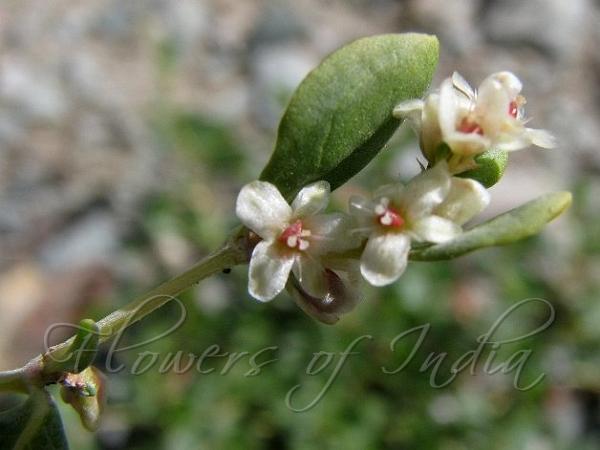|
| Twisted Knotweed |
|

|

| File size | 45416 |
| Original date | 9/12/11 11:01 AM |
| Resolution | 628 x 471 |
| Flash | Flash did not fire, auto |
| Focal length | 6.0mm |
| Exposure time | 1/1000s |
| Aperture | 4.5 |
| Focus Distance | |
| Metering Mode | Center weighted average |
| Camera make | Canon |
| Camera model | Canon PowerShot S5 IS |
| Sensor type | OneChipColorArea |
|
|
|
|
Photo: |
Botanical name: Koenigia tortuosa Family: Polygonaceae (Knotweed family)
Synonyms: Polygonum tortuosum, Aconogonon tortuosum, Polygonum tataricum
Synonyms: Polygonum tortuosum, Aconogonon tortuosum, Polygonum tataricum
Twisted Knotweed is an erect subshrub, 1-5 ft tall,
branched, velvety to hairy, with elongated rhizome. Stem is round,
profusely, dichotomously branched from base or above, velvety to hairy
or hairless, woody. Leaves are 1.5-4 cm long, 1-3 cm broad, elliptic,
lanceshaped-ovate, pointed or blunt at the tip, margin entire or wacy,
ciliate or rough or hairless. Leaves are hairless or velvety on both
sides with slightly rough or leathery texture. Leaf-stalks are 0.5-4.0
mm long. Ochrea 5.0-15 mm long, ovate-broadly ovate, entire to dentate,
tubular, truncate, hairy. Inflorescences are many flowered, dense,
velvety, up to 2 cm long stalked, panicles in leaf axils or at branch
ends. Panicles are 1.5-5 cm long. Flowers are 2-3.5 mm across, stalk
1-2.5 mm long, slightly longer in fruit. Ochreolae 1.5-3 mm long,
lanceolate, cartilaginous, ciliate, hairy. Tepals are 5, creamy white,
nearly equal, 1.5-3.5 x 0.75-1.25 mm, ovate to ovate elliptic, obtuse,
entire, parallel veined, veins 3. Stamens 8, somewhat protruding, filaments
long, equal. Nuts are 2.5-4 x 1.5-1.9 mm, ovate,
brown, shining, included or slightly exserted from the tepals.
Twisted Knotweed is found in the Himalayas, from Afghanistan, N India,
Nepal, to SW Asia, at altitudes of 3600-4900 m. Flowering: July-August.
| Identification credit: Amit Chauhan, Chris Chadwell | Photographed on Manali-Leh Route, Lahaul, Himachal Pradesh & Ladakh. |
• Is this flower misidentified? If yes,